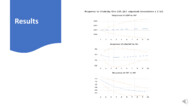 | EasyChair Smart Slide | User Guide/Log in |
| Home |

Unemployment and inflation are among the most critical phenomena facing both developed and developing countries due to their harmful social, economic, and political effects. The Egyptian monetary policy's main objective is to maintain a low inflation rate in the medium run to keep the confidence and a high rate of investment and economic growth. At the same time, economists argue that targeting a low- rate of inflation may increase unemployment. Although the classical Philips curve indicates a trade-off between inflation and unemployment, several empirical studies have argued that the relationship between inflation and unemployment depends on the shocks' source and lagged responses. The main objective of this paper is to examine the relationship between inflation and Egypt's unemployment rate. We used time-series data from 1980 to 2018, where a vector autoregressive (VAR) model and the Impulse response function tool (IRF) were employed. The results show that inflation has a positive relationship with GDP while negatively affecting the unemployment rate.















